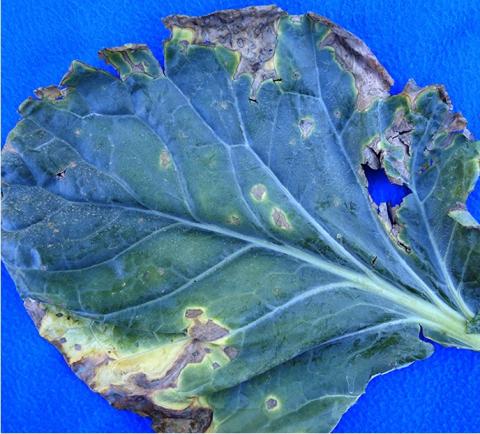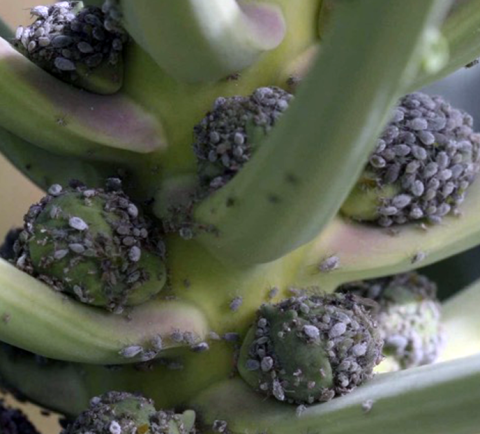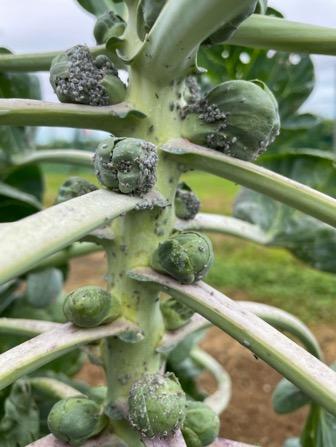Key Findings

Challenging pest problems, like cabbage aphids and Alternaria leaf spot, make growing Brussels sprout in the humid Northeast a challenge.
In 2021, NHAES researchers evaluated 16 Brussels sprout varieties, including old standards and newer releases.
Cultivars Diablo, Divino and Nautic had the highest yields, uniformity and resistance to Alternaria leaf spot.
About the Co-Author
Becky Sideman, professor, Agriculture, Nutrition, and Food Systems; follow the UNH Sideman Lab on Instagram, UNH Sideman Lab website
Contact information: Becky.Sideman@unh.edu, 603-862-3203
This research was published in the INSPIRED: A Publication of the New Hampshire Agricultural Experiment Station (Summer 2022)
Researchers: B. Sideman, O. Saunders, E. Hodgdon, T. Levy, A. Harris, C. Roman and S. Beck
Brussels sprout (Brassica oleracea L. var. gemmifera) is a popular fall crop in New England. However, rapid turnover in the commercial availability of Brussels sprout cultivars – coupled with dramatic differences in the performance and adaptability among cultivars – make it a challenging crop for growers outside of major production regions to select varieties that will consistently perform well. While a 2013–15 study of Brussels sprout varieties offered recommendations for New England producers, new varieties have since been released. This research focused on re-examining best-performing varieties for the northern New England region and updating best practice recommendations.
Planting and harvesting
In 2013, 2014, 2015 and 2021, Brussels sprout plants were planted in a randomized complete block designs with four replications and 12 plants per plot. Plants were spaced 18 inches apart within a single row on 30-inch raised beds covered with biodegradable black plastic mulch for weed control. Plants were seeded between May 4 and June 3, then transplanted a month later. No fungicides were applied to these experiments. Bacillus thuringiensis (DiPel) was applied as needed to manage caterpillars. Plants were topped (i.e., the apical meristem was removed) in mid-September. To manage cabbage aphids, organically approved materials, including azadirachtin, pyrethrum and/or insecticidal soap, were applied.
In 2015 and 2021, symptoms of Alternaria leaf spot were evaluated at harvest. Brussels sprouts were harvested and data were collected in late October through early December.
For each plant, the following data were collected: Total stem length and weight of marketable sprouts (marketable consisting of between 0.75 and 2.5 inches in diameter). For each plot, the proportion of sprouts that were too small or too large was also estimated. Table 1 presents rankings for the different varieties based on yield and the presence of Alternaria leaf spot.
Table 1: Rankings for mean marketable yield and susceptibility to Alternaria leaf spot for several Brussels sprout cultivars grown in Durham, NH, in 2013, 2014, 2015 and 2021.
Note: Alternaria leaf spot was rated at harvest. The percentage of sprouts with Alternaria lesions was estimated for each plot. Mean values were calculated and then ranked.


Left/above: Alternia leaf spot on a Brussels sprout leaf. Center and right/Above and below: Cabbage aphids attack Brussels sprouts.

